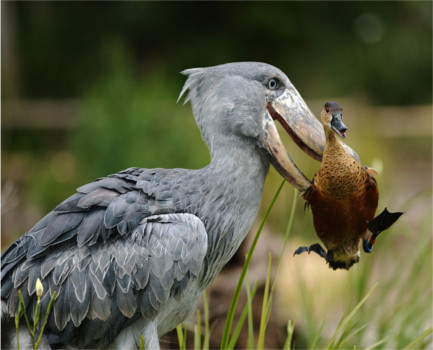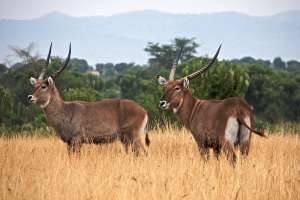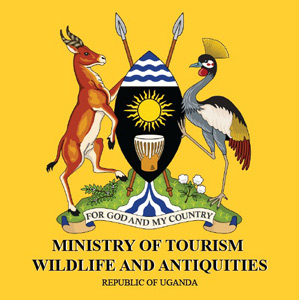Uganda is home to a variety of birds and wildlife- Gorillas, chimpanzees, tree climbing lions, monkeys of different kinds, leopards, impalas, the crested crane and so many more. The rare and elusive shoebill is one of the birding sights in Uganda.
The shoebill or shoe billed stork or whalehead is large bird mostly found in the lakes in the eastern part of Africa. It is most easily found in Uganda. But can also be seen in Kenya, the Central African Republic, northern Cameroon, south-western Ethiopia, Malawi, Botswana and the upper Congo River. This is one of the most sought after birds in Africa and is quite the sight if you mange to see it on your Uganda safari.
 What is so interesting about the shoebill?
What is so interesting about the shoebill?
There are a few interesting facts about this bird that make it an interesting species worth seeing on safari.
The Shoebill Stork has outstanding prehistoric looks. It has a massive shoe shaped bill. It’s usually about 150cm tall and can weigh up to 14 pounds. The Arabs used to call the Shoebill Stork –“Abu Maruk” meaning father of the shoe – one could call the Shoebill Stork a flying shoe because of the unique bill.
The shoebill is a solitary bird with has a lifespan of about 50 or more years.
It interestingly forms monogamous relationships during the mating season which falls between April and June. The parent birds make a nest on the ground, and the female usually lays two eggs. Both parents participate in the incubation period which lasts a month. The new chicks are fed by the parent birds for several months until they are old enough to forage for their own food.
What do shoebills feed on?
The shoebills are found lake or swamp so they find their food in the water. Their main diet is lungfish, which can be supplemented. The Shoebill stork, a swamp specialist, survives on a diet of mainly of lung fish which supplemented by frogs, puddle fish, the occasional baby crocodile and water snakes. All of this is possible because of the sharp edges of the wide bill.
A few behavioural facts…
Shoebill stocks tend to be nocturnal. Although they are primarily water birds, they do not have webbed feet, but can still stealthily stalk their prey in the water.
They are mostly solitary birds and have territories of which they can be quite protective.
They are normally silent birds but can perform bill clattering displays at their nests.
When in flight they have a wide wing span and their heads and necks retract.
They usually seem sluggish on the ground, but are graceful in the air and when attacking their prey they pull back their wings and approach their prey in a way demonstrating their strength.
 Where can you find shoebills in Uganda?
Where can you find shoebills in Uganda?
Shoebills can be seen in several places such as; In the Ishasha sector of Queen Elizabeth Park along the Lake Edward Flats, in Murchison Falls national Park where the Nile merges with Lake Albert, Lake Mburo National Park, Ziwa Rhino Reserve, Lake Kyoga , Semiliki Wildlife reserve, the Mabamba Swamp close to Entebbe and in the Nabajuzi Swamp in Masaka
The total population of shoebill storks in Uganda today is about 1000 birds. They are sometimes hunted by fishermen who have superstitions about their presence on the lake.
These birds are quite magnificent and worth a visit to the places named above. Add at least one of the shoebill habitats to your itinerary as you plan your Uganda safari.















